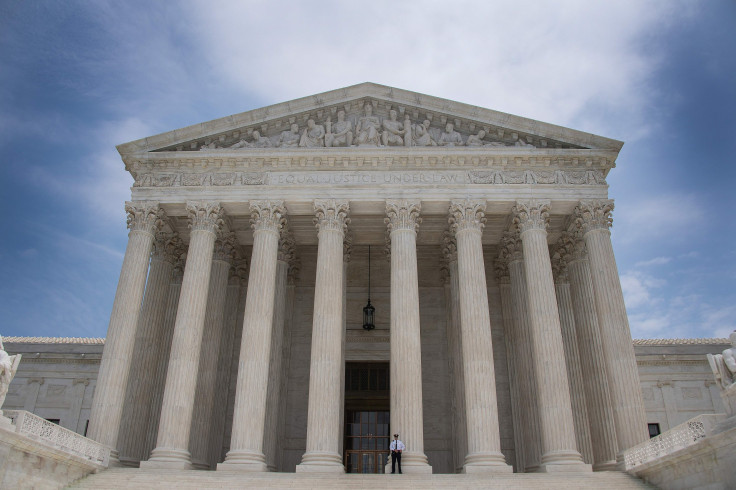What Is Gerrymandering? Supreme Court Looks At Case In Wisconsin

The Supreme Court of the United States announced Monday they would take on a Wisconsin gerrymandering case. A Wisconsin lower court ruled the state’s Republican-drawn electoral districts were unconstitutionally partisan. But what is gerrymandering?
Gerrymandering is the process by which political boundaries, like voting districts, are drawn in a way that advantage one group over another. Often that advantage is motivated by political party or is racially motivated. Politicians can draw lines that pack most Democrats or Republicans into one or more district, diluting their power in other districts, like this court case alleges. Gerrymandering has a long history and is done by both parties.
READ: Workers In The US: Is Supreme Court With Gorsuch 'Bad News' For Labor Rights In America?
“Wisconsin’s maps reliably delivered massive Republican majorities. In 2012, Republicans won 60 of the 99 seats in the Wisconsin Assembly despite winning only 48.6 percent of the two-party state-wide vote; in 2014, they won 63 seats with only 52 percent of the state-wide vote,” reported New York University School of Law’s Brennan Center for Justice Monday.
The Wisconsin court ordered the lines be redrawn by the 2018 election, but the Supreme Court has ordered a stay on that order, pausing it while the case is active.
In May the Supreme Court ruled on a case involving race-based gerrymandering in North Carolina. Two districts were drawn in 2011 after the 2010 census that grouped a large number of black voters together in oddly shaped districts. This packed black voters into these districts and diluted their power in other districts. Districts that are redrawn typically happen after the census determines population shifts.
A Supreme Court case in 1986 provides case law about how majority-minority districts are supposed to be drawn.
“Those conditions are the compactness or coherence of the minority group in question, the political cohesion of that group, and the likelihood of white voters tending to vote against that group’s preferred candidates if given a majority,” the Atlantic reported in May.
The court had been murkier on what is allowed in terms of partisan gerrymandering.
“But what of purely partisan gerrymanders, especially in the rest of the country? In 2004, a four-member Supreme Court plurality all but ruled out challenges to even extreme partisan gerrymanders, while four members of the court would have allowed some limited challenges,” NPR’s Supreme Court Reporter Nina Totenberg wrote last month. “Justice Anthony Kennedy cast the fifth and deciding vote, declaring that he might someday embrace a challenge to a partisan gerrymander if someone could come up with workable standards.”
A 1986 Supreme Court case, Davis v. Bandemer, established partisan gerrymandering as possibly a violation the equal protections clause of the Constitution but didn’t determine the standards.
READ: Anthony Kennedy Retirement Rumors: Who Is Trump's Next Pick For Supreme Court?
The acceptable standard of how partisan districts can be drawn is what this case hinges on. The impact of which could affect dozens of states and how and where many American vote.
The term was first developed in Massachusetts in 1812 by a Boston newspaper. It was a reaction to then Governor Elbridge Gerry’s redrawing of a Massachusetts district to help his party. The district resembled a salamander, and the Gerrymander came from putting the two words together. An editorial cartoon depicting the district as a monster helped popularize the term.
© Copyright IBTimes 2024. All rights reserved.





















